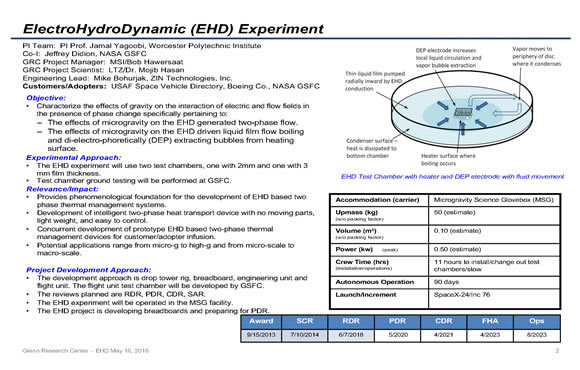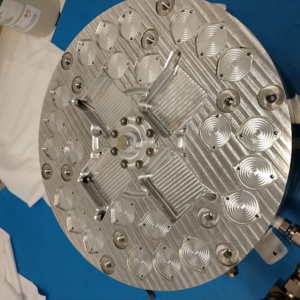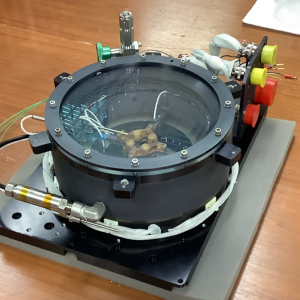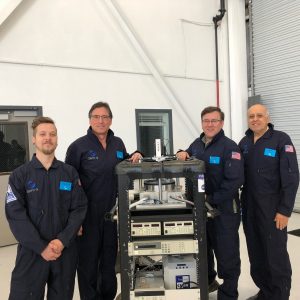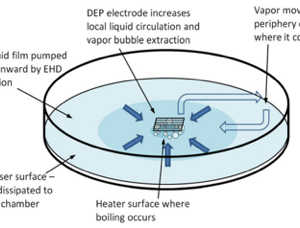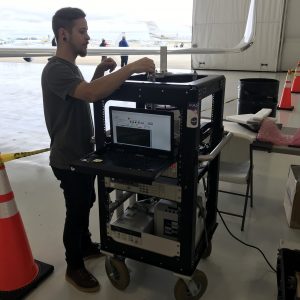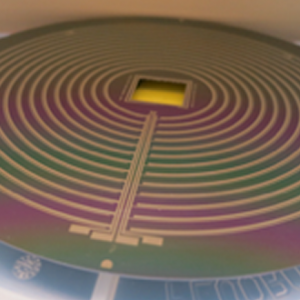EHD
ElectroHydroDynamics (EHD)
In space, it’s hard to keep your cool—especially if you’re a high-powered electronic device. Much of the electronic hardware found in modern satellites and space vehicles generates considerable heat. If not adequately removed, that heat can impair the performance of these devices or even cause them to fail.
For many years, NASA has been in search of a new way to deal with that heat to improve the performance and reliability of electronics in its satellites, planetary robots, and manned platforms, including the International Space Station. As with all space hardware, the solution should use little electric power, be lightweight, and have few moving parts, which could create noise and vibrations.
EHD Status
The ElectroHydroDynamic (EHD) Test Chamber Design Review was held on May 6, 2021. The Glenn Research Center EHD team presented the scope and purpose of the review. The Goddard Space Flight Center (GSFC) team presented the Test Chamber plan to build the proto-flight hardware. The design review included the review of the procedures, parts build list, documents, drawing tree, model of test chamber, thermal analysis and structural analysis.
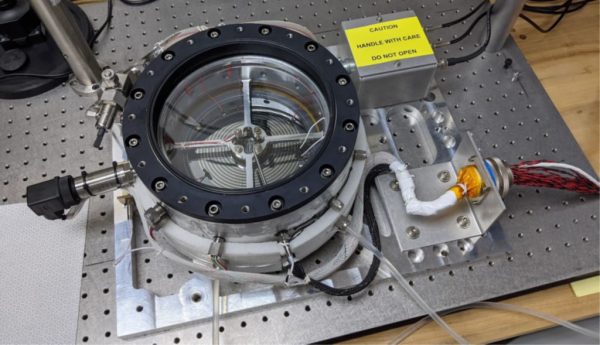 |
The EHD team presented the EHD Test Chamber breadboard and EHD System breadboard test results along with the required documents and drawings to a PDR Review Board and successfully completed the project Preliminary Design Review (PDR) milestone on May 27, 2020. The EHD Test Chamber PDR breadboard is being developed by Goddard Space Flight Center (GSFC) and was integrated into the EHD System PDR breadboard being developed by ZIN Technologies, Inc. The EHD integrated system level breadboard testing was conducted from January 2020 through March 2020 to gather data to prepare for the Preliminary Design Review.
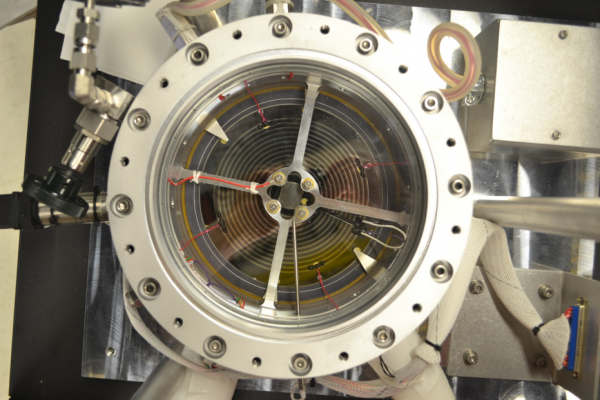 |
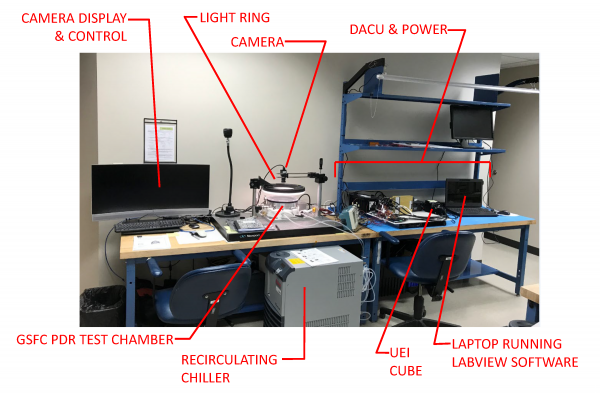 |
The ElectroHydroDynamic (EHD) fluids experiment participated in flight week in Orlando Florida on the Zero-g reduced gravity aircraft. The Zero-g flight week operations were conducted on November 18-22, 2019. The EHD experiment reduced gravity rig operated and gathered data on 120 flight parabolas during the week. The EHD science team will analyze the data starting this week. The EHD project will use the reduced gravity flight data to further refine the breadboard design in preparation for the Preliminary Design Review (PDR).
 |
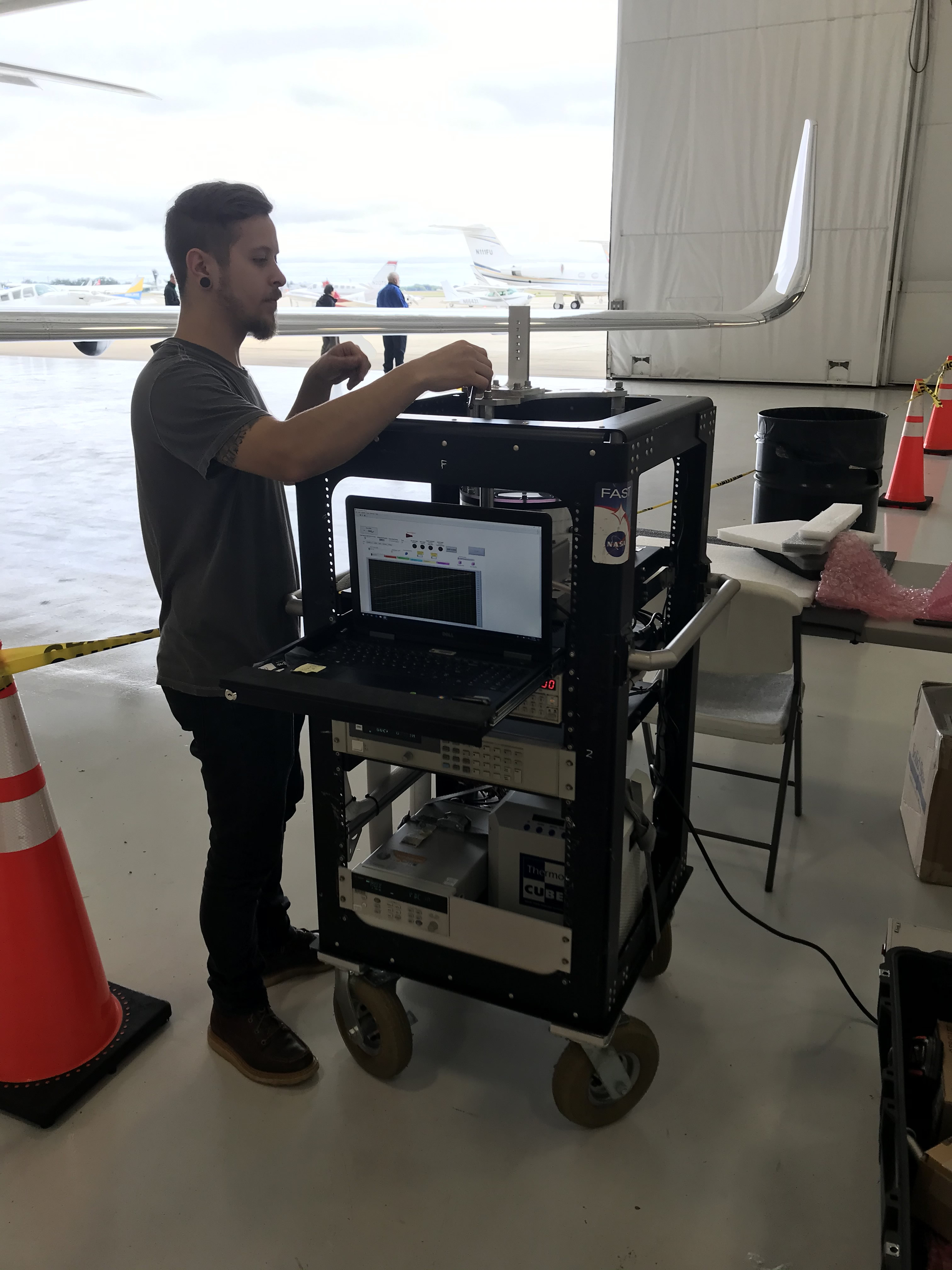 |
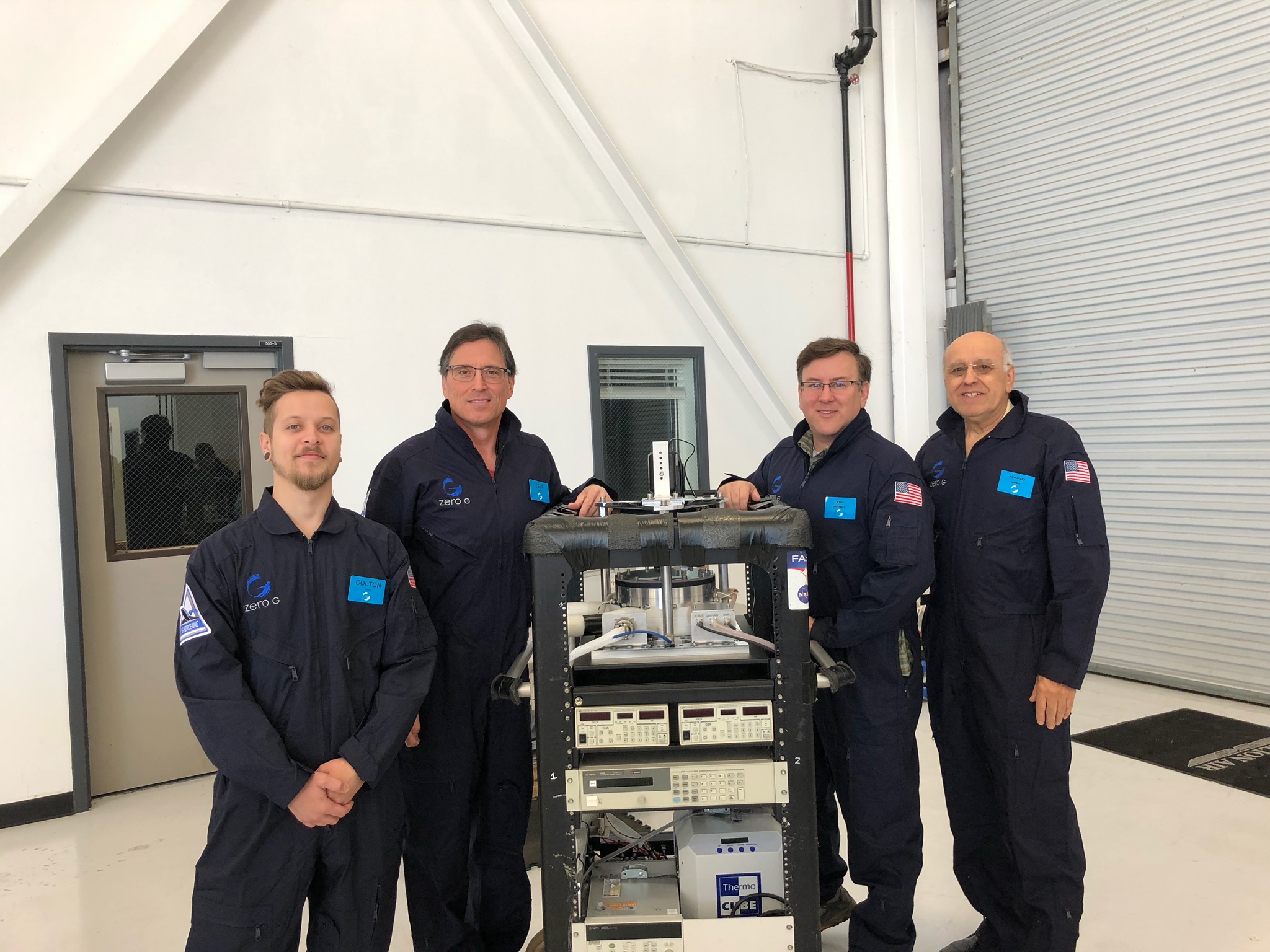 |
Objective
- Characterize the effects of gravity on the interaction of electric and flow fields in the presence of phase change specifically pertaining to:
- The effects of microgravity on the EHD generated two-phase flow.
- The effects of microgravity on the EHD driven liquid film flow boiling and Di-Electro-Phoretically (DEP) extracting bubbles from heating surface.
Experimental Approach:
- The EHD experiment will use two test chambers, one with 2mm and one with 3 mm film thickness.
- Test chamber ground testing will be performed at GSFC.
- Relevance/Impact:
- Provides phenomenological foundation for the development of EHD based two phase thermal management systems.
- Development of intelligent two-phase heat transport device with no moving parts, light weight, and easy to control.
- Concurrent development of prototype EHD based two-phase thermal management devices for customer/adopter infusion.
Project Development Approach:
- The development approach is drop tower rig, breadboard, engineering unit and flight unit. The flight unit test chamber will be developed by GSFC.
- The reviews planned are RDR, PDR, CDR, SAR.
- The EHD experiment will be operated in the MSG facility.
Related Documents
Currently updating…
Publications
Currently updating…
Gallery
Contact Information
Principal Investigator Team
Principal Investigator: Prof. Jamal Yagoobi, Worcester Polytechnic Institute
Co-Investigator: Jeffrey Didion, NASA GSFC
GRC Project Manager: MSI/Cody Farinacci
GRC Project Scientist: LTZ/Dr. Mojib Hasan
Engineering Lead: Mike Bohurjak, ZIN Technologies, Inc.
Customers/Adopters: USAF Space Vehicle Directory, Boeing Co., NASA GSFC


